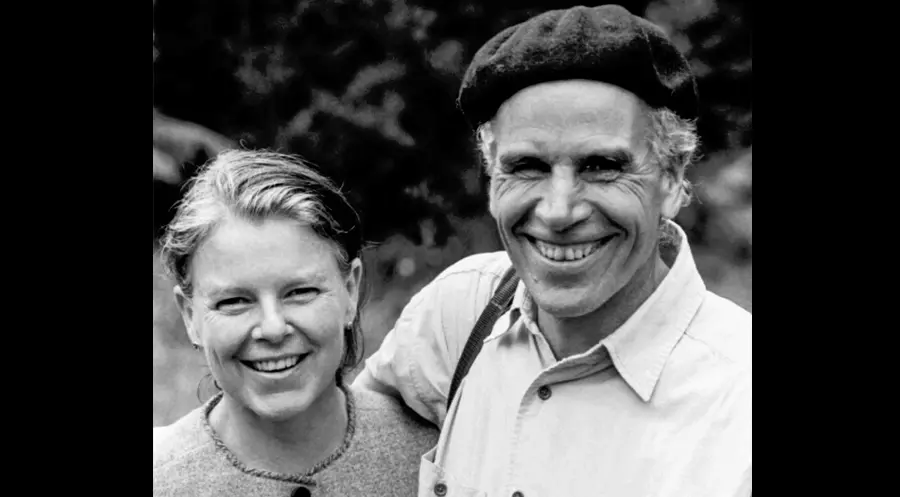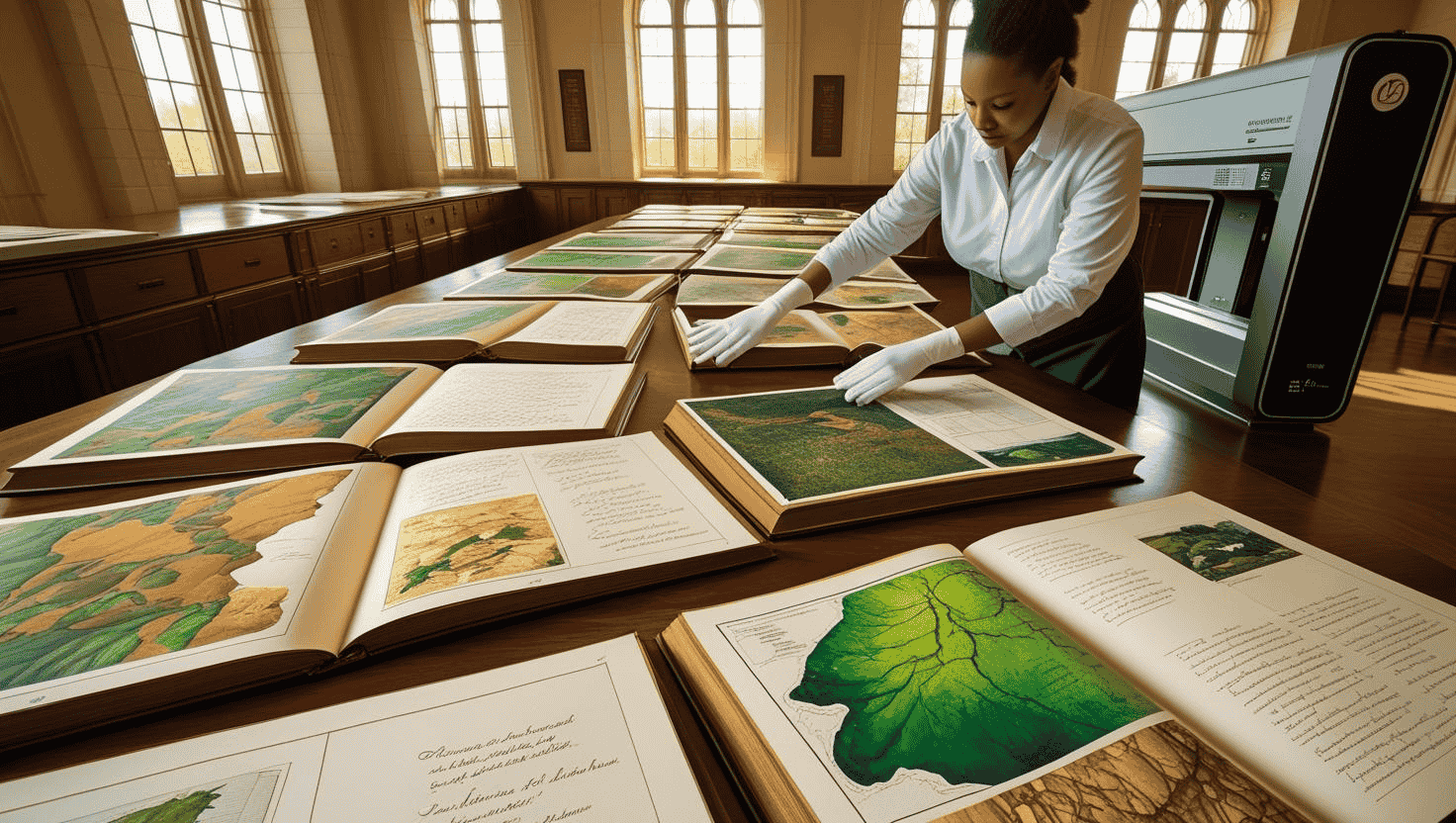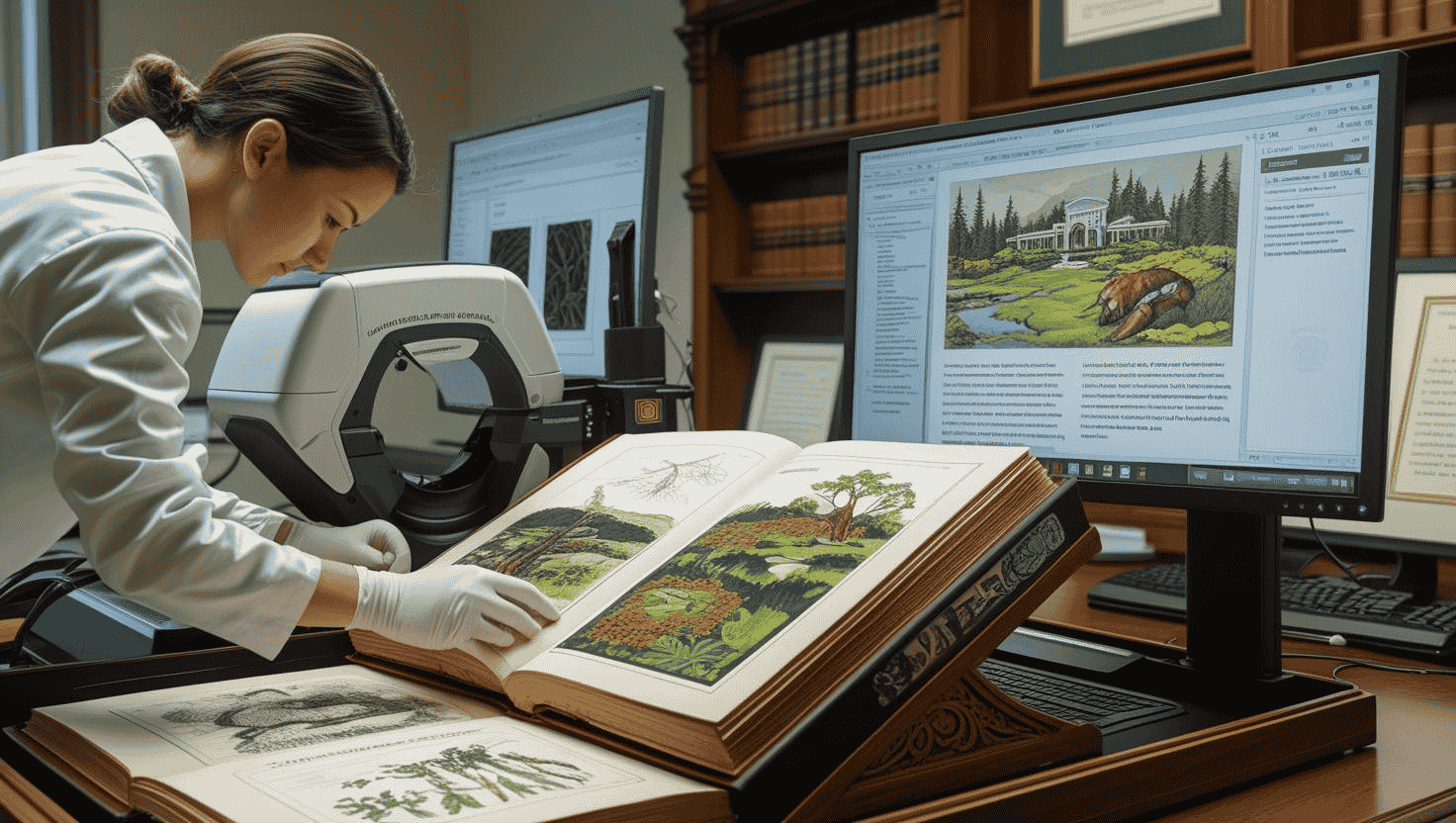
How eRecordsUSA Digitized the Tompkins Conservation Archive?
Doug & Kris Tompkins turned 14 million acres of Patagonia wilderness into protected parks. Their legacy was captured in premium 15 × 17-inch coffee-table volumes packed with field studies, maps and design plans—books too fragile and oversized for conventional scanners.
eRecordsUSA deployed cradle-mounted, non-contact overhead scanners to preserve every glossy page at 400–600 DPI. Each book was delivered in TIFF masters for long-term storage plus OCR-searchable PDFs for researchers at Stanford University Libraries.
The result? A fully indexed digital collection that now fuels ecological research, informs rewilding policy and safeguards a once-in-a-generation conservation story.
Project Profile
- Client: Tompkins Conservation / Tompkins Family Trust
- Location: San Francisco, CA
- Industry: Non-profit • Conservation • Academic Archives
- Document Types: Premium oversized hardcover books, high-gloss environmental volumes
- Scope: 20+ years of ecological fieldwork
- Goal: Create a searchable, preservation-grade digital archive
Project Objective & Digitization Challenges
- Protect a once-in-a-generation record of rewilding 14 million acres in Patagonia.
- Share field data, biodiversity maps, and park master-plans with scholars worldwide.
- Bottom line: Preserve a legacy and make it discoverable for future research.
- Sheer size & weight – books up to 13 lb required cradle-based, non-contact scanning.
- Glossy pages – glare-free capture demanded precise light calibration at 400–600 DPI.
- Metadata depth – every page needed structured tags for Stanford’s library system.
- Gigabyte outputs – uncompressed TIFF masters + OCR PDFs pushed processing limits.
- Confidentiality – private trust materials handled under strict chain-of-custody.
eRecordsUSA’s Precision Solution
- Pre-Project Audit – measured bindings, paper stock, image density, and fragility.
- Specialised Hardware – overhead scanners with adjustable cradles preserved spines.
- High-Fidelity Capture – calibrated scans at archival DPI for true-to-print colour.
- Dual-Format Delivery – TIFF for preservation, searchable PDF for daily research.
- Standards-Aligned Metadata – MARC-ready fields for immediate catalogue import.
- Encrypted Handoff – files transferred via secure, segmented folders.
Who Are Doug and Kris Tompkins, and Why Does Their Legacy Matter?
There are few names in the conservation world as powerful — and as poetic — as Doug Tompkins and Kris Tompkins.
Doug Tompkins, the adventurous founder of The North Face and Esprit, and his wife, Kris Tompkins, the visionary CEO of Patagonia, Inc., together gave up boardrooms for backwoods, turning their fortunes into forests, lakes, and rewilded ecosystems.
After stepping away from their iconic outdoor brands, they devoted their lives and fortunes to rewilding over 14 million acres of land in Patagonia, which spans both Chile and Argentina.
Their nonprofit, Tompkins Conservation, has played a pivotal role in establishing national parks, restoring ecosystems, and promoting conservation policy throughout South America. Their work has reshaped the landscape of global conservation, and their story needed to be preserved with the same care they gave the wild.


What Was the Purpose Behind Digitizing the Tompkins Conservation Archive?
To document this extraordinary mission, the Tompkins family created a collection of large-format, premium hardcover books. These publications — filled with field studies, biodiversity data, ecological design plans, and national park proposals — were never produced for commercial release. They were personal legacies in print, designed to inform, influence, and inspire future generations of conservationists.
In 2024, the Tompkins Family Trust and Tompkins Conservation prepared to gift these volumes to Stanford University Libraries, where they would serve as a permanent research archive. Before that could happen, however, they needed a digitization partner capable of preserving every detail.
Why Tompkins Conservation Chose eRecordsUSA as Their Archival Digitization Partner?
Tompkins Conservation needed a vendor who could satisfy Stanford University Libraries’ preservation-grade standards while treating each oversized, glossy volume as an irreplaceable heirloom. eRecordsUSA met that brief—and more.
- Project engineers developed custom cradle settings to maintain spine integrity, capturing each page in glare-free, true-to-color detail.
- Metadata specialists mapped every chapter to MARC fields, enabling instant discoverability in Stanford’s Digital Repository.
- Weekly milestone reviews with the Trust and university archivists kept the workflow transparent, on-schedule, and error-free.

What We Delivered vs. Why It Mattered
| What We Delivered | Why It Mattered |
|---|---|
| Cradle-Based, Non-Contact Scanning | Protects fragile 15 × 17.5 in. books without breaking spines or flattening pages. |
| Dual-Format Output (TIFF + OCR PDF) | Uncompressed TIFF masters for long-term preservation; fully searchable PDFs for instant academic use. |
| MARC-Ready Metadata & File Naming | Seamless ingestion into Stanford’s digital repository and easy discoverability for researchers worldwide. |
| White-Glove, Institutional-Grade Service | Trusted partner to universities, NGOs, and cultural foundations requiring absolute chain-of-custody confidence. |
By translating complex archival requirements into a flawless, end-to-end workflow, eRecordsUSA ensured this once-in-a-generation conservation legacy is both safeguarded for the future and accessible today.
What Makes the Digitized Collection at Stanford University So Valuable?
Today, the digitized volumes form a central part of the Tompkins Archive at Stanford University Libraries, supporting ongoing field studies, ecological education, and scholarly research.
Each book — carefully scanned, structured, and delivered by eRecordsUSA — allows new generations to explore:
- How national parks were created from private landholdings
- The scientific and policy frameworks behind rewilding
- Firsthand field documentation from Patagonia’s most remote regions
Read the Stanford University Library Press Release
What Made This Digitization Project a Historic Honor for eRecordsUSA?
This wasn’t just a digitization project— it was an invitation to preserve a movement. Doug Tompkins, a visionary who donated his life and wealth to environmental restoration, and Kris Tompkins, a living legend in sustainable philanthropy, created these works as a legacy for the planet.
By scanning and archiving these volumes, eRecordsUSA became a part of that legacy.
What Challenges Did eRecordsUSA Face?
Digitizing the Tompkins Conservation archive meant overcoming a range of technical and logistical hurdles, each tied to the value, scale, and sensitivity of the collection:
The Tompkins Conservation digitization project presented a distinct set of technical and logistical challenges due to the rare, high-value nature of the materials:
- Oversized and heavyweight formats: Books measuring up to 15 x 17.5 inches and weighing over 13 pounds demanded a custom scanning setup and precise book handling protocols.
- Glossy, reflective paper stock: High-gloss finishes require exact scanner calibration to capture sharp, color-accurate images without glare or distortion.
- Non-destructive requirements: As heirloom volumes, the books could not be unbound or flattened, eliminating many conventional digitization methods.
- High-resolution output volume: Files in uncompressed TIFF and searchable PDF formats reached hundreds of megabytes per book, requiring high-capacity processing and delivery systems.
- Advanced metadata demands: Each file had to conform to structured metadata systems suitable for long-term digital archiving and academic integration.
- Security and confidentiality: As part of a private trust, all materials were handled in accordance with strict data integrity and privacy protocols.
Each challenge required tailored solutions and precision execution, reflecting eRecordsUSA’s capacity to handle legacy-level digitization with technical mastery and care.
How Did eRecordsUSA Strategically Digitize These Historical Records?
To meet the Tompkins Family Trust’s expectations and the technical needs of this legacy project, eRecordsUSA implemented a multi-phase, precision-driven digitization strategy:
- Detailed Project Assessment – We conducted a pre-digitization review of book dimensions, paper type, image density, and condition to determine optimal handling and scanning requirements.
- Specialized Equipment Deployment – Non-contact overhead scanners with cradle support were used to digitize the document without stressing the binding or spine, thereby preserving its structural integrity.
- High-Resolution Image Capture – Scans were executed at 300–600 DPI, calibrated for clarity on glossy, full-color pages with complex imagery and text overlays.
- Dual-Format Deliverables – Each volume was delivered in both archival-grade uncompressed TIFF format and searchable, OCR-optimized PDF format, suitable for both institutional storage and academic use.
- Metadata Structuring & QA – We applied custom metadata structures aligned with archival standards and conducted thorough quality assurance to ensure consistency and accuracy.
- Secure File Delivery – Digital files were transferred using encrypted protocols and structured folders, with naming conventions supporting future discoverability and archiving.
This wasn’t just digitization — it was digital conservation.
How Did Client Collaboration Shape the Process?
A critical part of the project’s success was eRecordsUSA’s close collaboration with Esther Lee, the primary representative of the Tompkins Family Trust.
From kickoff through final delivery, we maintained an open feedback loop — adapting metadata fields, batch delivery formats, and quality thresholds to match the Trust’s evolving expectations. Communication was key, and our white-glove service approach ensured the client remained informed and in control.
This partnership ensured that every detail — from pixel fidelity to filename structure — aligned with the Trust’s vision and respected the gravity of the legacy.
What Lasting Results Did This Project Deliver?
This project wasn’t just a technical success — it delivered transformative outcomes for the legacy of Doug and Kris Tompkins and the institutions now benefiting from their work:
- Global Access to a Conservation Legacy – The digitized volumes are now part of the Stanford University Libraries archive, making decades of ecological insight available to researchers and students around the world.
- Preserved Print Fidelity in Digital Form – Every page, photo, and design element was captured with archival clarity — ensuring no loss of narrative or visual impact.
- Long-Term Digital Safeguarding – TIFF formats ensure that the archive can be maintained and migrated across systems for decades to come.
- Support for Field Studies and Ecological Education – The archive now serves as a living academic resource, supporting ongoing field research in Patagonia and beyond.
- A Testament to Legacy-Level Preservation – For eRecordsUSA, the project stands as a flagship example of how digitization can preserve not just paper, but purpose.
Why Does This Digitized Tompkins Conservation Archives Matter for Future Generations?
According to Stanford Librarian Michael A. Keller, the archive “will inspire brilliant students… to work for a more wild, equitable and beautiful planet.”
Kris Tompkins said it best:
“Though our work takes place at the tip of South America, our origins started in the Bay Area… It’s fitting that the archives of Doug and I will be housed at Stanford.”
With this gift, students, scientists, and storytellers will continue their fight for nature — equipped with a beautifully preserved foundation, scanned and structured by eRecordsUSA.
Ready to Digitize a Legacy That Deserves to Live Forever?
At eRecordsUSA, digitisation goes beyond scanning—we safeguard stories. Our cradle-based imaging, colour-calibrated capture, and MARC-ready metadata turn fragile archives into preservation-grade digital collections that can be studied for decades.
Foundations, nonprofits, universities, and family trusts rely on us for white-glove handling of oversised, heirloom-quality materials. Every page is captured at archival resolution, indexed for discovery, and delivered through encrypted channels.
Have questions about scope, timing, or cost? Use the options below to connect with our specialists or click “Get an Instant Quote” for a no-obligation estimate within one business day.
